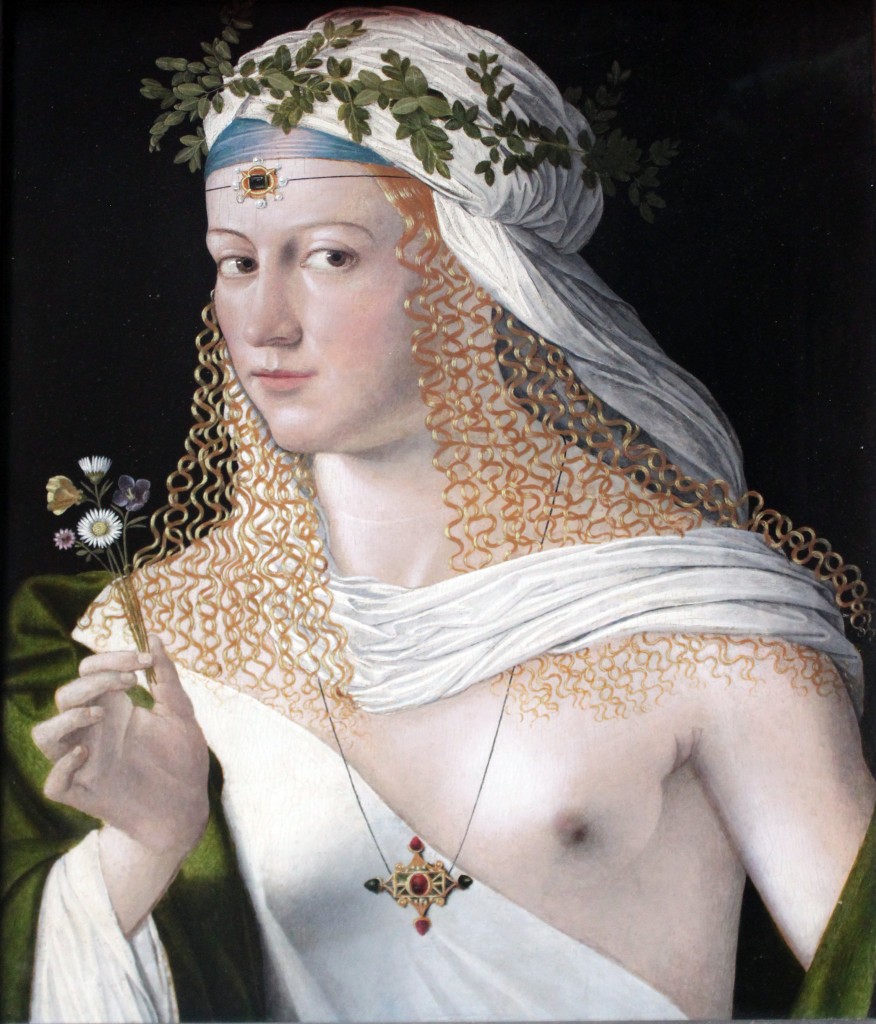What is the trouble with sex? Sexualisation, meaning “to become sexual” or “the act of giving someone or something a sexual character”, has been problematic for many in the contemporary west. Concerns about sexualisation have centred on the inappropriate sexualisation of young women, in particular, through sexualised media, clothing, and engagement in sexual activity. The perception is that young women are becoming ‘too sexy, too soon’ and that this is specifically caused by changes in modern society.
But the twenty-first century is not the first time people have worried about the sexualisation of young women: such concerns are evident even in the late Middle Ages (1350-1500), and I explore how worries about sexualisation are presented in educational advice literature. Focusing on clothing and appearance, external threat and public space, and reputation, I examine how ideas of gender and sexuality are represented, and how the medieval time period can help us think differently about sexualisation today.

Advice literature has a long history. Sometimes referred to as conduct or didactic literature, this genre emerged in medieval Europe. By the fourteenth century, significant amounts of advice literature began to circulate in the vernacular as a result of a growing urban, bourgeois population of young people who were leaving their rural homes to work in households in towns and cities. Urban spaces enabled young people to mingle with members of the opposite sex in unsupervised settings. Against this backdrop, advice literature focused on fostering intimate relationships and on the correct ways to secure marriage.
Few English advice texts aimed specifically at girls or women survive, but one of the most popular late medieval texts intended for a female audience is How the Good Wife Taught her Daughter (composed c.1350). This 209 line rhyming poem survives in five separate manuscripts dating between 1350 and 1500. The Middle English colloquial text is written from the perspective of a mother-narrator advising her daughter (although the text itself was almost certainly written by a man, probably a cleric). It offers advice on general life – attend church, maintain household order – on intimate relationships with the opposite gender, and on negotiating a potential husband.
According to Good Wife, the dangers of sexualisation come from public spaces – the tavern, the market – and people who frequent those spaces. All men are a source of concern “for anything … might happen”. In response to the dangers men posed Good Wife advises women to regulate their own behavior and their movements.
When you walk on the path, don’t walk too fast
Nor turn your head from side to side
[…] Go not as though you were a frivolous person (lit. a goose)
From house to house, to seek distraction (57-58; 61-62)
In response to sexualisation, the poem advocates women to segregate themselves within the domestic sphere. The Good Wife emphasises the position of the intended daughter as a housewife, providing instruction on the completion of household management tasks, exhorting the daughter to “stay … at home” (77), and frequently using the words ‘house’, ‘household’, ‘housewife’ and ‘home’ (cited 14 times). This makes clear the idea that women should remain in the home where they can carry out designated tasks but also, crucially, where their behaviour can be controlled and their contact with unsuitable others minimised.
Good Wife is also explicit about the dangers of particular kinds of dress or appearance:
Look that you wear no fancy clothes
Nor copy any lady
For much shame befalls those
That lose their honour through their pride (119-122)
For medieval women, ostentatious clothing is linked directly to a loss of honour, firmly connecting reputation, always sexual for medieval women, with wearing appropriate clothing. The text presents a narrowly defined model of femininity, here defined in the kind of clothing the daughter can wear.
The poem’s overarching goal is to help young women become respectable wives. The difficult path to marriage, it conveys, is maintaining a sexually virtuous reputation. Accordingly, the threat to reputation from sexualised activity is a key concern of Good Wife. In late medieval England, social identity, especially for bourgeois women, rested on one’s reputation. Through its numerous references to ‘neighbours’, ‘friends’, family and ‘servants,’ the poem showcases how women’s reputations were constantly surveyed by others. The poem also presents an idealized image of a medieval woman who is appropriately dressed, meek, mild, and well-spoken.
Medieval advice literature worried about the same kinds of sexualisation issues as we are today: sexy clothing; inappropriate or dangerous spaces; and the threat to reputation of sexualised behaviour. What is evident in Good Wife is that these concerns are deeply gendered; women are taught to behave in particular ways in order to induct them into patriarchal sexual and gender roles that position them as the secondary sex.
But this gendered perspective on sexualisation – the ways in which sexualisation is produced by and upholds gender inequality– is less clear today. Current reporting on sexualisation has moved away from viewing it within a gender equality framework and instead endorsed the idea that sexualisation contaminates childhood with premature sexual behaviour and that children need to be protected from it. This notion is supported by a right-wing moral agenda that promotes abstinence and obscures the structural hegemony of heteronormative gender roles, which underpin the discourse of sexualisation.
Reframing our thinking on sexualisation in light of medieval advice thus reminds us that gender is inextricably linked with sexualisation, and that understanding wider issues of gender inequality is vital for dealing with the ‘problem’ of sexualisation and effectively teaching children about sexuality. Ultimately, ‘thinking medievally’ about sexualisation shows the need to learn from our sexual past in order to fully understand our sexual present.
 Amy Burge works at the University of Edinburgh, where she uses historical perspectives to think through modern discourses of love, relationships, gender and sexuality. She has published articles and chapters on masculinity, and virginity, and her recently published book explores religious difference in Orientalist popular culture (Representing Difference in the Medieval and Modern Orientalist Romance, Palgrave Macmillan 2016). She tweets @dramyburge and blogs at Thirty-Fifth Century Romance.
Amy Burge works at the University of Edinburgh, where she uses historical perspectives to think through modern discourses of love, relationships, gender and sexuality. She has published articles and chapters on masculinity, and virginity, and her recently published book explores religious difference in Orientalist popular culture (Representing Difference in the Medieval and Modern Orientalist Romance, Palgrave Macmillan 2016). She tweets @dramyburge and blogs at Thirty-Fifth Century Romance.

NOTCHES: (re)marks on the history of sexuality is licensed under a Creative Commons Attribution-NonCommercial-NoDerivatives 4.0 International License.
Based on a work at www.notchesblog.com.
For permission to publish any NOTCHES post in whole or in part please contact the editors at NotchesBlog@gmail.com




